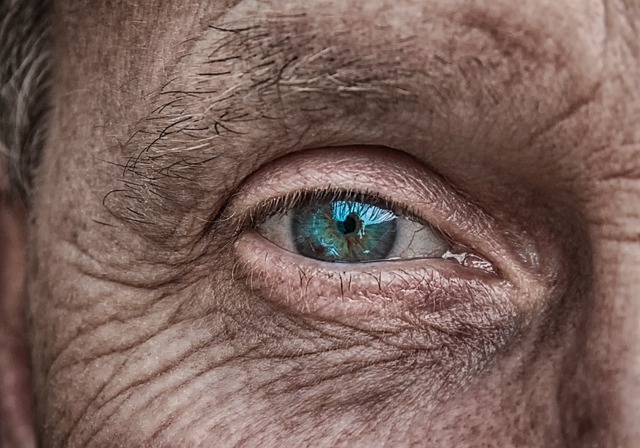Skin tags, growths common in areas of friction, can cause discomfort or aesthetic concerns. Liverpool offers diverse non-surgical methods like topical creams and laser therapy for scar-free removal. Advanced surgical options, recommended by dermatologists, include laser surgery and cryosurgery. Proper post-care is crucial to minimize scarring; keep treated areas clean, avoid irritation, and apply gentle moisturizers. Selecting a qualified professional ensures optimal results with minimal scarring from Liverpool Tag Removal procedures.
Looking to get rid of skin tags without scarring in Liverpool? This comprehensive guide covers everything you need to know. We explore the causes and types of skin tags, from non-surgical removal methods available locally to surgical options designed for minimal scarring. Learn at-home care tips and how to choose a professional for safe, effective Liverpool tag removal.
- Understanding Skin Tags: Causes and Types
- Non-Surgical Methods for Tag Removal in Liverpool
- Surgical Options for Scarring Prevention
- At-Home Care and Post-Treatment Tips
- Choosing the Right Professional for Tag Removal
Understanding Skin Tags: Causes and Types
Skin tags, also known as acrochordons, are small, soft skin growths that typically appear in areas where skin rubs against itself, such as the neck, armpits, or groin. They can vary in size and shape, often resembling a tiny tag or stalk. While they are generally harmless, many people seek Liverpool Tag Removal due to aesthetic concerns or discomfort caused by their presence.
There are several types of skin tags, with the most common being acral and fibromas. Acral tags are typically found on the hands and feet and often look like small, soft, flesh-colored bumps. Fibromas, on the other hand, are firmer and can be more prominent, sometimes causing pain or irritation. Understanding these causes and types is essential when considering safe and effective removal methods for a smooth, scar-free result.
Non-Surgical Methods for Tag Removal in Liverpool
In Liverpool, several non-surgical methods offer effective skin tag removal without leaving scars. Topical creams and ointments containing ingredients like salicylic acid or liquid nitrogen are commonly used. These treatments work by gradually reducing the size of the skin tag until it disappears or can be easily removed. Many people prefer these options for their convenience and minimal downtime.
Laser therapy is another popular non-surgical approach to Liverpool Tag Removal. Laser beams target the blood vessels supplying the skin tag, causing them to shrink and eventually fall off. This method offers precise results and is suitable for various skin types. It may require multiple sessions, but it’s an effective way to eliminate skin tags without leaving any visible scars.
Surgical Options for Scarring Prevention
In some cases, individuals may opt for surgical procedures to remove skin tags and minimize scarring risks. A common method is laser surgery, which uses concentrated light energy to destroy the skin tag tissue with minimal damage to surrounding healthy skin. This approach is particularly effective for smaller skin tags and can provide quick results. Additionally, a procedure called cryosurgery involves freezing the skin tag with liquid nitrogen, causing it to fall off naturally over time. Both techniques are often recommended by dermatologists in Liverpool for Tag Removal, ensuring a lower chance of scarring compared to traditional cutting methods.
The surgical options mentioned above are designed to preserve the skin’s natural integrity while effectively removing unwanted skin tags. These procedures are typically performed under local anaesthesia, making them relatively comfortable for patients. Post-operative care is crucial, including keeping the treatment area clean and following medical advice regarding wound care. By choosing these modern methods, individuals in Liverpool can achieve smoother, scar-free results in the long term.
At-Home Care and Post-Treatment Tips
After removing skin tags at home or through professional Liverpool Tag Removal services, proper care is essential to prevent scarring and ensure the best possible outcome. Following treatment, keep the area clean and dry. Avoid touching or picking at the site, as this can cause irritation and potentially lead to infection. Using a gentle cleanser and avoiding harsh chemicals or products containing alcohol will help maintain the skin’s integrity.
To support healing and reduce the risk of scarring, apply a thin layer of unscented moisturizer daily. Stay hydrated by drinking plenty of water, which aids in overall skin health and facilitates the healing process. Protecting the treated area from direct sunlight is crucial; always wear sunscreen when going outdoors to prevent further irritation or pigment changes. Remember, patience is vital—it may take several weeks for the skin to fully heal, and scarring can occur even with careful at-home care, so consistent attention and monitoring are key.
Choosing the Right Professional for Tag Removal
When considering Liverpool tag removal, it’s crucial to choose a qualified professional for the best outcomes and minimal scarring. Look for certified dermatologists or experienced cosmetic surgeons who specialize in non-invasive procedures. These experts will have the knowledge and tools to remove skin tags safely and effectively, ensuring your comfort and peace of mind.
Consider factors like their reputation, reviews from past patients, and the types of removal methods they offer. Some common techniques include cryotherapy (freezing), surgical excision, or laser treatments. Discussing these options with your chosen professional will help you understand the pros and cons of each, allowing you to make an informed decision tailored to your needs.
When seeking Liverpool tag removal, understanding your options is key. From non-surgical methods like cryotherapy and ligation to surgical procedures designed to prevent scarring, each has its pros and cons. Following treatment, proper at-home care is essential for optimal results. Remember, choosing the right professional who specialises in skin tag removal can make all the difference in achieving a safe and effective procedure with minimal risk of scarring.
